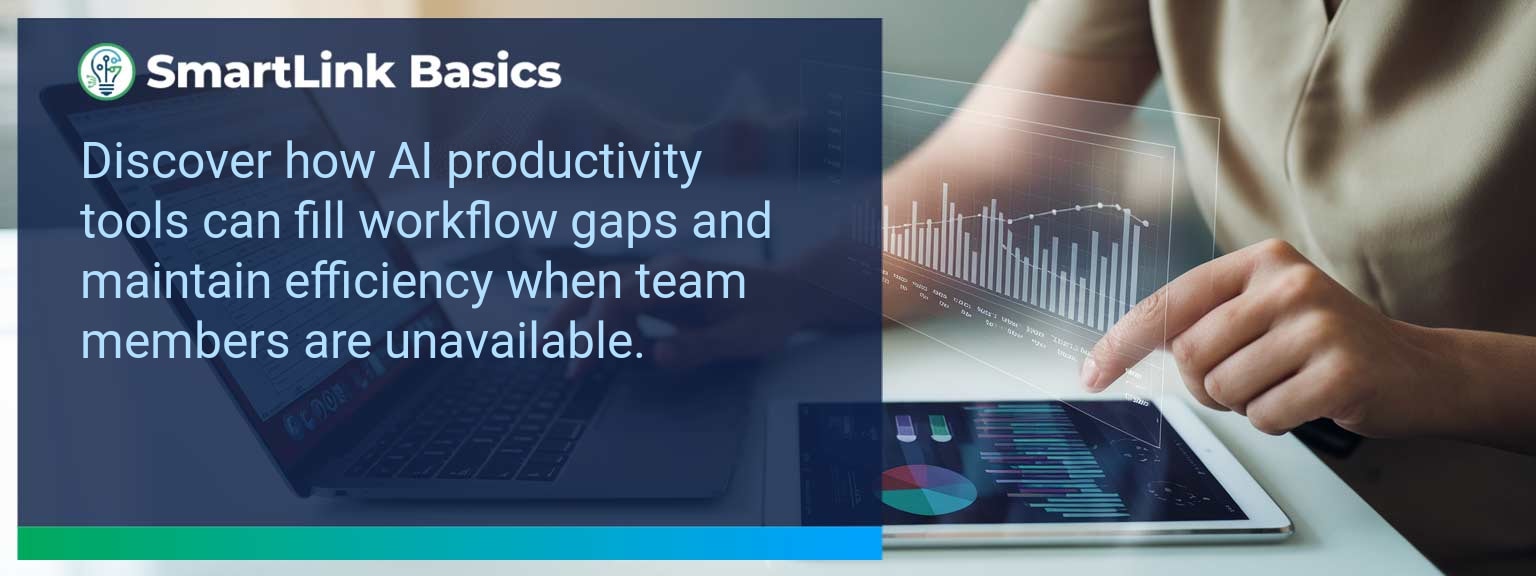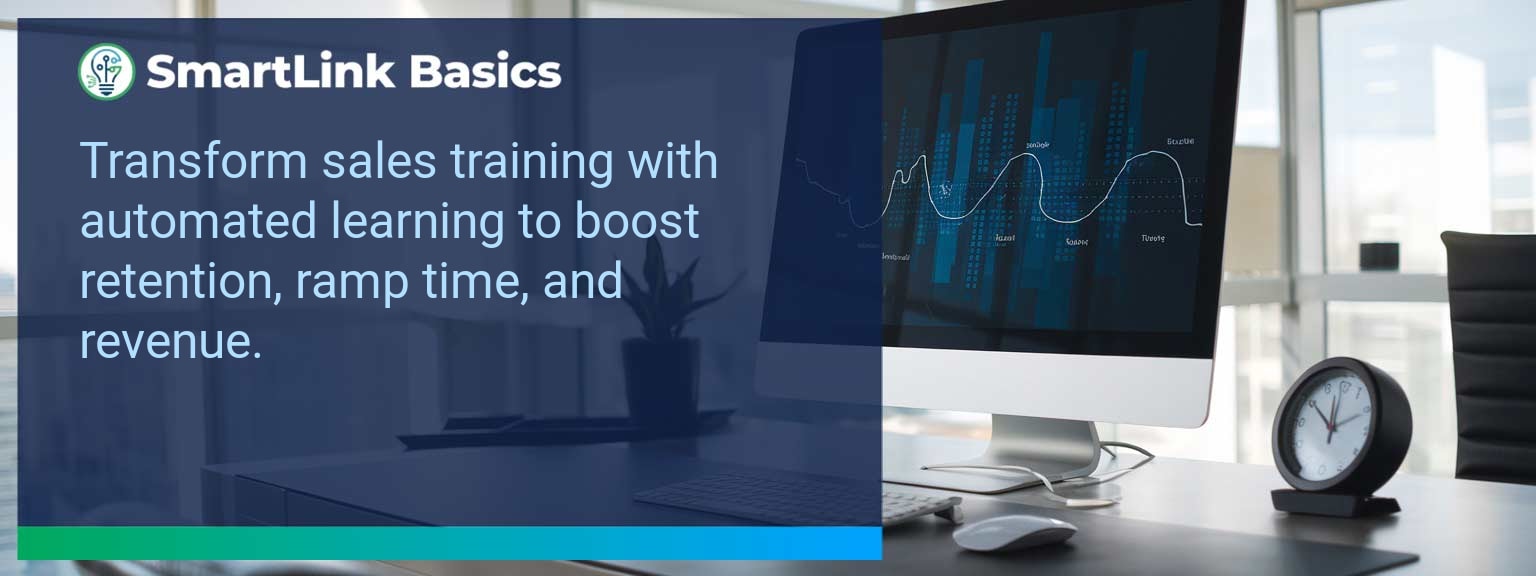Unexpected absences can drain execution speed and disrupt revenue operations. Research by McKinsey shows that productivity losses from unplanned downtime can cost teams as much as 20% of weekly output. At SmartLink Basics, we have seen firsthand how integrating AI productivity tools into sales workflows can preserve performance even when staffing is reduced. This matters now because AI work automation and AI collaboration software have matured enough to seamlessly replace portions of human output without sacrificing quality. In this article, you’ll learn how to identify process gaps caused by absences, apply AI workplace solutions to maintain momentum, and measure efficiency improvements with precision. The goal: ensure consistent client experience and operational resilience whether your top performers are at their desk or not.
- Identify critical workflow gaps during absences before they impact clients.
- Deploy AI productivity tools for task automation and digital collaboration.
- Integrate AI into operational cadence, not as a separate system.
- Train teams to work fluidly with AI task management platforms.
- Track leading and lagging metrics to confirm efficiency gains.
Identifying Workflow Bottlenecks And Delays With AI Productivity Tools
The first step in maintaining operational output during absences is to pinpoint where workflows slow down. AI-powered project management tools can flag recurring backlogs, missed follow-ups, and stalled approvals. These insights provide leaders with factual evidence for reallocation of tasks before clients feel the impact.
For example, an AI platform can monitor CRM pipelines in real time and issue alerts when lead progression stalls for more than two days. By having data-driven visibility, managers can make rapid intervention decisions.
Actionable insight: Conduct a weekly AI scan of operational touchpoints to spot and address bottlenecks before they expand into revenue-impacting delays.
Leveraging AI Productivity Tools To Maintain Operations
When a team member is unavailable, AI work automation can absorb routine, high-volume tasks. Examples include automated proposal generation, AI-driven follow-up scheduling, and pipeline scoring. These interventions protect against output slippage without requiring emergency workload shifts for remaining staff.
In a recent deployment, a sales team used AI collaboration software to manage client handoffs. The system auto-summarized conversations, updated CRM records, and suggested logical next steps for the team member covering the account.
Actionable insight: Identify the top three repetitive workflows in your sales cycle and program AI workplace solutions to handle them, ensuring continuity even during extended absences.
Improved Efficiency And Team Resilience
Integrating AI tools into your team’s operating rhythm ensures that productivity is not person-dependent. This approach improves resilience by reducing the impact of any single absence on outcomes. When remote team efficiency is supported by digital collaboration tools, handoffs and follow-ups become frictionless.
Consider a scenario where two account executives are out during a product launch week. AI task management systems can handle lead nurturing sequences, freeing the remaining team to focus on high-value negotiations.
Actionable insight: Build workflows in which AI can autonomously complete 30–40% of daily repetitive actions under normal circumstances, so they can absorb the load when absences occur.
Expanding AI Integration Across Teams
Once AI productivity tools are proven effective during isolated events, extend their use across the wider organization. The challenge shifts from gap-filling to continuous enhancement of productivity through automation and intelligent coordination.
For instance, organizations that implemented AI workplace solutions for absence coverage later expanded them into cross-department project tracking, shortening campaign delivery times by 18%.
Actionable insight: Treat absence coverage as the starting point. Gradually scale AI-driven processes into core team functions for lasting productivity gains.
| Category | Metric | Definition | Target |
|---|---|---|---|
| Leading | Automated Task Execution Rate | % of recurring sales tasks handled by AI tools | 40%+ |
| Leading | Bottleneck Detection Time | Average hours to identify delays via AI alerting | < 6 hours |
| Lagging | Weekly Opportunity Win Rate | % of closed-won deals against total qualified opportunities | 55%+ |
| Lagging | Client Retention Post-Absence | % of clients retained after coverage by AI systems | 98%+ |
| Quality | Handoff Accuracy Score | Accuracy of AI-generated summaries versus human review | 95%+ |
| Quality | Internal Alignment Rating | Team-reported clarity on task ownership and priorities during absence coverage | 9/10 |
<
Get the 90-day plan, coaching rubric, and dashboard template to operationalize AI in your enablement program.
Ensuring Continuity Through Intelligent Automation
Absences no longer need to halt momentum when AI is embedded in your sales infrastructure. The strategies outlined here show how targeted automation, proactive bottleneck detection, and consistent operating rhythms preserve both performance and client trust. Leaders who adopt these practices build true resilience into their teams. Explore more AI-driven sales enablement resources from SmartLink Basics to operationalize these principles today.









